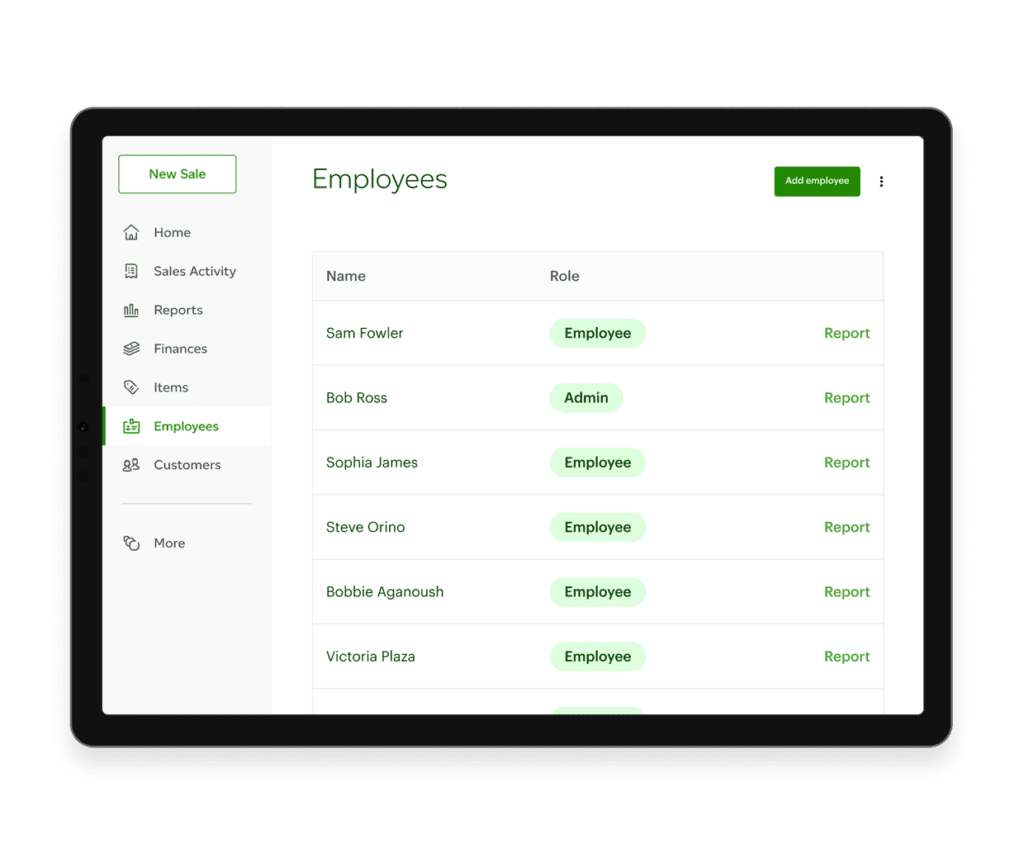Streamline Your Employee Management with Payroll and Timekeeping Tools

Managing a workforce and ensuring accurate and timely payroll can be a complex and time-consuming task for any employer. However, with the right payroll and timekeeping tools, you can streamline these processes, reduce manual errors, and improve overall efficiency.
By leveraging advanced payroll and timekeeping tools, you can automate the calculation of hours worked, manage time off requests, and generate accurate pay stubs for your employees. These tools also allow you to easily track and manage overtime hours, deductions, and taxes, ensuring compliance with labor laws and regulations.
Not only do payroll and timekeeping tools simplify employee management, but they also offer additional benefits such as seamless integration with other HR systems, detailed reporting and analytics, and enhanced data security.
With the ever-increasing demands of managing a diverse workforce, investing in robust payroll and timekeeping tools is a strategic decision for any organization. By leveraging these tools, you can streamline your employee management processes, save valuable time and resources, and focus on more strategic aspects of your business.
Discover the power of payroll and timekeeping tools today and experience the transformative impact on your organization’s efficiency and productivity.
The Importance of Efficient Employee Managemente

Efficient employee management is crucial for the success of any organization. It involves various tasks such as tracking employee attendance, calculating hours worked, managing time off requests, and processing payroll accurately and on time. Without proper systems in place, these tasks can be time-consuming, prone to errors, and can lead to dissatisfaction among employees.
By using payroll and timekeeping tools, organizations can streamline these processes and ensure that employee management is efficient and accurate. These tools automate the calculation of hours worked, taking into account factors such as overtime, breaks, and time off. This eliminates manual errors and ensures that employees are paid accurately for their work.
Furthermore, efficient employee management also involves compliance with labor laws and regulations. Payroll and timekeeping tools can help organizations stay compliant by automatically calculating deductions, taxes, and overtime rates according to the relevant laws. This not only saves time but also minimizes the risk of non-compliance and potential legal issues.
Overall, efficient employee management is essential for maintaining a productive and satisfied workforce. By investing in payroll and timekeeping tools, organizations can streamline their processes, reduce errors, and create a positive work environment.
What Are Payroll and Timekeeping Tools
Payroll and timekeeping tools are software solutions designed to automate and streamline the processes involved in managing employee attendance, calculating hours worked, and processing payroll. These tools eliminate the need for manual calculations, paperwork, and repetitive administrative tasks, saving time and reducing the risk of errors.
Payroll tools handle various aspects of the payroll process, including calculating gross wages, deductions, taxes, and net pay. They can generate pay stubs, automate direct deposits, and ensure compliance with labor laws and regulations. Timekeeping tools, on the other hand, focus on tracking employee attendance, time off requests, and hours worked. They can automate the calculation of overtime, manage accruals, and provide detailed reports on employee time data.
Both payroll and timekeeping tools often come as part of an integrated HR software suite or as standalone solutions. They can be cloud-based or installed locally, depending on the organization’s preferences and requirements. Some tools may also offer additional features such as employee self-service portals, mobile access, and integration with other HR systems.
Benefits of Using Payroll and Timekeeping Tools
Using payroll and timekeeping tools can bring numerous benefits to organizations of all sizes. Let’s explore some of the key advantages:
- Time and Cost Savings: Payroll and timekeeping tools automate repetitive tasks, such as manual calculations and data entry. This saves significant time for HR teams, allowing them to focus on more strategic activities. Additionally, automation reduces the risk of errors, which can result in costly rework or legal issues.
- Accuracy and Compliance: Payroll and timekeeping tools ensure accurate and compliant payroll processing. They automatically calculate deductions, taxes, and overtime rates according to relevant laws and regulations. This minimizes the risk of errors and non-compliance, saving organizations from potential fines or legal consequences.
- Enhanced Employee Experience: With payroll and timekeeping tools, employees can easily access their pay stubs, track their attendance, and submit time off requests. This self-service functionality improves transparency and empowers employees, leading to higher satisfaction and engagement levels.
- Detailed Reporting and Analytics: Many payroll and timekeeping tools offer robust reporting capabilities. These tools generate detailed reports on various aspects, such as attendance, overtime, and payroll expenses. This data enables organizations to gain valuable insights, make data-driven decisions, and identify areas for improvement.
- Integration and Data Security: Payroll and timekeeping tools often integrate seamlessly with other HR systems, such as HRIS or benefits administration platforms. This integration eliminates the need for manual data entry and ensures data consistency across systems. Additionally, these tools usually have built-in security features to protect sensitive employee information.
The benefits of using payroll and timekeeping tools go beyond streamlining processes. They contribute to overall organizational efficiency, employee satisfaction, and compliance with labor laws and regulations.
How Payroll and Timekeeping Tools Can Streamline Employee Management Processes

Payroll and timekeeping tools streamline employee management processes by automating and centralizing key tasks. Let’s explore how these tools can streamline some of the critical processes:
- Attendance Tracking: Payroll and timekeeping tools automate attendance tracking by capturing data from various sources, such as biometric devices, web-based clock-ins, or mobile apps. This eliminates the need for manual timesheets and ensures accurate and real-time data.
- Time Off Management: With payroll and timekeeping tools, employees can easily submit time off requests, which can be reviewed and approved by managers. These tools can track accrued time off, manage different types of leave (such as vacation or sick leave), and ensure that employees are aware of their remaining balances.
- Payroll Processing: Payroll tools automate the calculation of various components, such as regular wages, overtime, deductions, and taxes. They generate pay stubs that provide employees with a detailed breakdown of their earnings. Some tools also offer direct deposit functionality, eliminating the need for physical checks.
- Compliance with Labor Laws: Payroll and timekeeping tools keep organizations compliant with labor laws and regulations. These tools automatically calculate deductions, taxes, and overtime rates based on the applicable laws. They also generate reports that can be used to demonstrate compliance during audits or inspections.
- Data Integration and Reporting: Payroll and timekeeping tools often integrate with other HR systems, such as HRIS or benefits administration platforms. This integration ensures data consistency and eliminates the need for manual data entry. These tools also provide robust reporting capabilities, allowing organizations to analyze trends, monitor costs, and make data-driven decisions.
By automating and centralizing critical employee management processes, payroll and timekeeping tools can significantly reduce administrative burden, minimize errors, and enhance overall efficiency.
Features to Look for in Payroll and Timekeeping Tools
When selecting payroll and timekeeping tools for your organization, it’s essential to consider the features that align with your specific needs. Here are some key features to look for:
- Automation: The tools should automate repetitive tasks, such as calculations, data entry, and pay stub generation. This saves time and reduces the risk of errors.
- Customization: Look for tools that allow customization to match your organization’s policies, pay structures, and compliance requirements.
- Integration: Ensure that the tools can integrate with other HR systems to streamline data flow and eliminate manual data entry.
- Reporting and Analytics: Robust reporting capabilities enable you to generate detailed reports on various aspects, such as attendance, time off, and payroll expenses. Look for tools that provide customizable reports and analytics.
- Mobile Access: Mobile-friendly tools allow employees to access their information, submit time off requests, and view pay stubs on the go.
- Data Security: Payroll and timekeeping tools deal with sensitive employee information. Ensure that the tools have robust security measures in place to protect data from unauthorized access or breaches.
- Scalability: Consider whether the tools can scale as your organization grows in size or complexity. Ensure that they can handle increased employee counts, multiple locations, or different pay structures.
By considering these features, you can select payroll and timekeeping tools that best fit your organization’s requirements and set the foundation for efficient employee management.

Popular Payroll and Timekeeping Tools in the Market
The market offers a wide range of payroll and timekeeping tools, each with its unique features and functionalities. Here are some popular tools that organizations across various industries have found beneficial:
- ADP Workforce Now: ADP Workforce Now is a comprehensive HR solution that includes payroll, timekeeping, and other HR management features. It offers customizable reporting, compliance support, and integration with other ADP products.
- Gusto: Gusto is a user-friendly payroll and HR software designed for small to medium-sized businesses. It provides automated payroll processing, time tracking, benefits administration, and employee self-service features.
- Paylocity: Paylocity offers a cloud-based payroll and HR management platform. It includes time and attendance tracking, payroll processing, benefits administration, and employee self-service capabilities.
- Kronos Workforce Ready: Kronos Workforce Ready is a unified HR management suite that includes timekeeping, payroll, HRIS, and talent management features. It offers mobile access, advanced reporting, and integration with other systems.
- QuickBooks Payroll: QuickBooks Payroll is a popular choice for small businesses. It provides automated payroll processing, tax calculations, and integration with QuickBooks accounting software.
These are just a few examples of the many payroll and timekeeping tools available in the market. It’s important to evaluate your organization’s specific needs and conduct thorough research to find the tool that best fits your requirements.
Factors to Consider When Choosing Payroll and Timekeeping Tools
Choosing the right payroll and timekeeping tools for your organization can be a critical decision. Here are some factors to consider during the evaluation process:
- Organization Size and Complexity: Consider the number of employees, locations, and pay structures your organization has. Ensure that the tools can handle your current and future needs.
- Budget: Determine your budget for payroll and timekeeping tools. Consider the total cost of ownership, including licensing fees, implementation costs, and ongoing support.
- Ease of Use: User-friendly tools are essential to ensure adoption and minimize the learning curve. Consider tools with intuitive interfaces and clear documentation or training resources.
- Vendor Reputation and Support: Research the reputation of the vendors and their track record in delivering reliable and timely support. Look for customer reviews and references.
- Scalability and Flexibility: Choose tools that can scale with your organization’s growth and adapt to changing requirements. Consider whether the tools can handle multi-location or multi-country payroll processing.
- Data Security and Compliance: Ensure that the tools have robust security measures in place to protect sensitive employee information. Consider whether the vendors comply with relevant data protection regulations.
- Integration Capabilities: If you already have existing HR systems, consider the integration capabilities of the tools. Ensure that they can seamlessly integrate with your current systems to avoid data duplication or inconsistencies.
By considering these factors, you can make an informed decision and choose the right payroll and timekeeping tools that align with your organization’s needs and goals.
Implementation and Integration of Payroll and Timekeeping Tools
Implementing payroll and timekeeping tools requires careful planning and coordination. Here are some key considerations for a successful implementation:
- Project Planning: Define clear objectives, timelines, and responsibilities for the implementation project. Involve key stakeholders, such as HR, finance, and IT teams, to ensure a smooth transition.
- Data Migration: Plan for a smooth transfer of existing employee data from legacy systems to the new tools. Ensure data accuracy and integrity during the migration process.
- Training and Change Management: Provide comprehensive training to HR teams, managers, and employees to ensure they can effectively use the new tools. Communicate the benefits and address any concerns to facilitate smooth adoption.
- Integration with Other Systems: Determine the integration requirements with other HR systems, such as HRIS or benefits administration platforms. Coordinate with vendors or IT teams to establish seamless data flow between systems.
- Testing and Quality Assurance: Conduct thorough testing of the tools’ functionalities, including payroll calculations, time tracking, and reporting. Identify and resolve any issues or discrepancies before going live.
- Post-Implementation Support: Ensure that there is ongoing support available from the vendor or internal IT teams to address any issues or questions that may arise after the implementation.
By following these implementation best practices, organizations can minimize disruptions, ensure data accuracy, and maximize the benefits of payroll and timekeeping tools.
Best Practices for Using Payroll and Timekeeping Tools Effectively
To maximize the benefits of payroll and timekeeping tools, organizations can follow these best practices:
- Regular Data Maintenance: Keep employee data up to date by regularly reviewing and updating information, such as job titles, pay rates, and tax deductions. This ensures accurate payroll processing and compliance.
- Automated Alerts and Reminders: Set up automated alerts and reminders for important tasks, such as time off approvals or payroll processing deadlines. This helps HR teams stay on top of critical activities.
- Training and Support: Provide ongoing training and support to HR teams, managers, and employees to ensure they fully understand the tools’ functionalities and can use them effectively.
- Regular Audits and Reviews: Conduct regular audits of payroll data and reports to identify any discrepancies or potential issues. Review processes and make necessary adjustments to improve efficiency and accuracy.
- Stay Updated with Regulations: Keep up to date with changes in labor laws and regulations that may impact payroll calculations or timekeeping requirements. Ensure that the tools are configured to reflect the latest legal requirements.
- Monitor and Analyze Data: Leverage the reporting and analytics capabilities of the tools to monitor trends, identify areas for improvement, and make data-driven decisions.
By following these best practices, organizations can ensure that they are maximizing the benefits of payroll and timekeeping tools and continuously improving their employee management processes.
Conclusion: The Future of Employee Management with Payroll and Timekeeping Tools
In today’s fast-paced business environment, efficient employee management is crucial for organizational success. Payroll and timekeeping tools offer a powerful solution to streamline employee management processes, reduce errors. Having the right team and technology behind you is the key to success.

